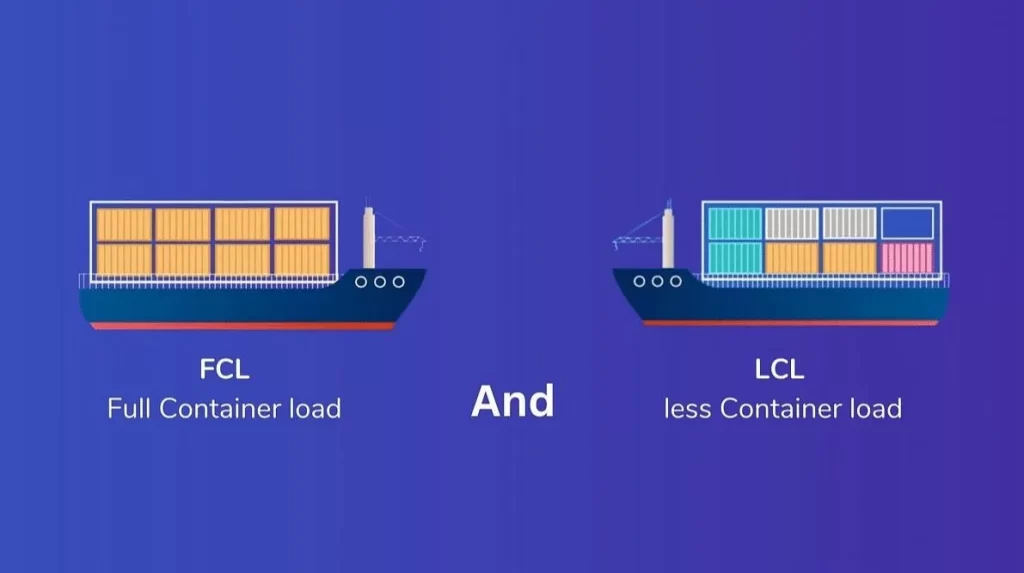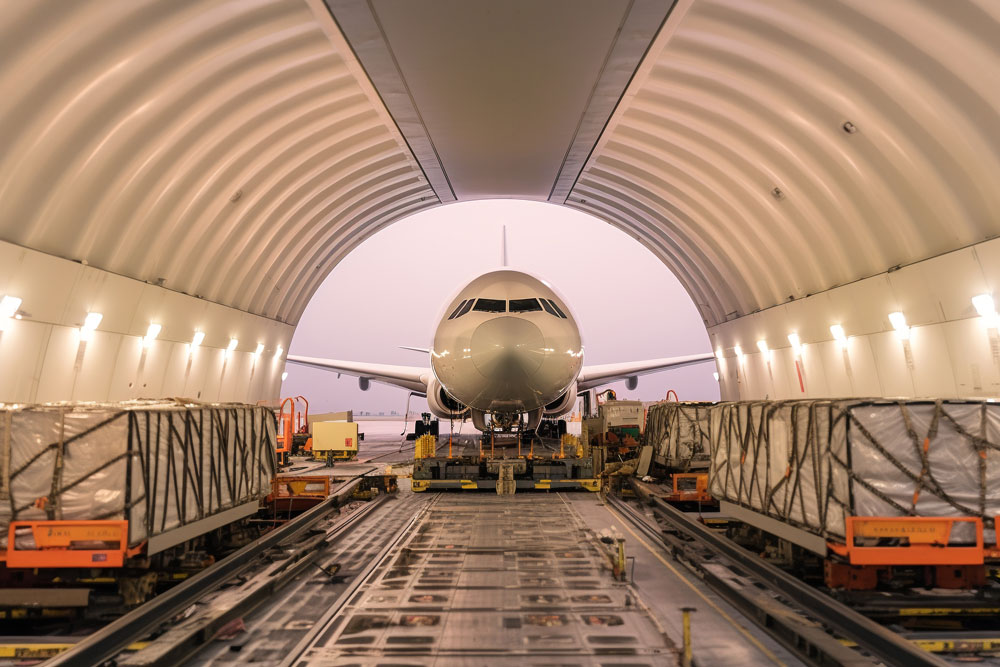- By Della tj
- October 10, 2025
- Sea Freight, Shipping
Table of Contents
Shipping from China to Germany through LCL (Less-than-Container Load) is an ideal solution for businesses seeking affordable, flexible logistics. For importers managing smaller shipments, this method minimizes costs while maintaining steady supply chains. This guide explores every aspect of LCL shipping China to Germany, from process to pricing, ensuring your deliveries arrive safely and on time.
What Is LCL Shipping from China to Germany?
LCL shipping allows multiple shippers to share a single container, each paying only for their cargo’s space.
It’s a preferred method for small and medium-sized enterprises exporting to Germany from ports like Shanghai, Ningbo, or Shenzhen.
Advantages include:
- Lower shipping costs compared to full container loads (FCL)
- Flexibility for mixed or smaller cargo volumes
- Ideal for testing new markets
Disadvantages include:
- Slightly longer handling times
- Shared space increases the risk of delays
| Shipping Type | Cargo Volume | Average Cost (USD/m³) | Transit Time | Best For |
|---|---|---|---|---|
| LCL | <15 m³ | $45–$70 | 30–40 days | Small shipments |
| FCL (20ft) | Full container | $1,000–$1,400 | 28–35 days | Bulk cargo |
| Air Freight | <2 m³ | $5–$10/kg | 5–8 days | Urgent goods |


How Does the LCL Shipping Process Work?
The LCL shipping process from China to Germany follows a well-organized chain involving multiple logistics stages:
- Cargo collection from supplier’s warehouse in China
- Consolidation at freight forwarder’s warehouse
- Export customs clearance in China
- Sea freight from port (e.g., Shanghai) to Hamburg or Bremerhaven
- Deconsolidation at German warehouse
- Import customs clearance and final delivery
Moreover, freight forwarders handle paperwork, ensuring your goods comply with EU import standards.
What Are the Key Costs in LCL Shipping China to Germany?
Several components determine your total LCL shipping cost:
| Cost Component | Description | Typical Range (USD) |
|---|---|---|
| Ocean Freight | Based on volume (m³) | $45–$70/m³ |
| Origin Charges | Handling, consolidation | $60–$120 |
| Destination Charges | Unloading, customs | $100–$180 |
| Customs Duties | Product-specific | 0–10% |
| Documentation | BL, certificates | $30–$50 |
Example:
Shipping 8 m³ of electronic components from Shenzhen to Hamburg may cost around $700–$850, including fees.
What Are the Transit Times and Routes for LCL Shipments?
Transit time depends on origin and destination ports, as well as customs clearance speed.
| Route | Port of Origin | Destination Port | Average Transit Time |
|---|---|---|---|
| Shanghai → Hamburg | Shanghai | Hamburg | 32–38 days |
| Ningbo → Bremerhaven | Ningbo | Bremerhaven | 33–40 days |
| Shenzhen → Hamburg | Shenzhen | Hamburg | 35–42 days |
Additionally, express LCL services now reduce transit by up to 20%, using faster feeder connections and priority customs.
Customs and Documentation Requirements
For smooth customs clearance between China and Germany, accurate documentation is crucial. Errors may lead to costly delays.
Essential documents include:
- Bill of Lading (BL)
- Commercial Invoice
- Packing List
- Certificate of Origin
- Importer’s EORI number
- CE Certificate (for regulated goods)
Tip: Work closely with your freight forwarder to pre-check HS codes and tariff classifications before shipment.
Real Case Studies of LCL Shipping China to Germany
Case 1: Furniture Shipment (Guangzhou → Hamburg)
- Cargo: 9 m³ of solid wood furniture
- Mode: LCL sea freight
- Cost: $720 (including handling)
- Transit Time: 36 days
- Result: Delivered intact, with optimized space utilization
Case 2: Electronic Components (Ningbo → Bremerhaven)
- Cargo: 6 m³ of PC parts (fragile goods)
- Cost: $560
- Transit Time: 34 days
- Remarks: Consolidated with temperature-sensitive cargo, managed efficiently
LCL vs Other Freight Modes
| Mode | Cost | Transit Time | Ideal Cargo | Pros | Cons |
|---|---|---|---|---|---|
| LCL Sea Freight | $45–$70/m³ | 30–40 days | 1–15 m³ | Economical, scalable | Slightly longer time |
| FCL Sea Freight | $1,000–$1,400 | 28–35 days | >15 m³ | Exclusive container | Higher cost |
| Air Freight | $5–$10/kg | 5–8 days | <2 m³ | Fast | Expensive |
| Rail Freight | $1.5–$2/kg | 18–22 days | 2–10 m³ | Faster than sea | Limited schedules |
Therefore, LCL remains the most cost-effective for moderate cargo volumes that are not time-sensitive.
Tips to Optimize Your LCL Shipping Efficiency
- Plan shipments early to avoid congestion during holiday seasons
- Accurately label cargo to prevent misplacement during consolidation
- Combine shipments strategically with the same consignee
- Use reliable forwarders offering real-time tracking
- Insure high-value goods for complete peace of mind
As a result, these measures enhance delivery reliability and reduce unforeseen surcharges.
Conclusion
To summarize, LCL shipping from China to Germany offers an economical, flexible, and reliable logistics solution for importers managing medium-volume shipments. With careful planning, accurate documentation, and professional freight forwarding, you can reduce costs and streamline supply chain performance. Whether shipping furniture, apparel, or electronics, LCL remains a smart choice for sustained global trade success.
Request a Quote
Need a tailored solution for your shipping from China?
Let TJ China Freight Forwarder assist you with reliable, cost-effective service.
FAQ:
Q1.How much does LCL shipping from China to Germany cost per cubic meter?
It usually costs $45–$70 per m³, depending on cargo type, destination port, and seasonal rate changes.
Q2.What is the typical transit time for LCL shipping from China to Germany?
Transit time generally takes 30–40 days, depending on route, port congestion, and customs procedures.
Q3.Can I track my LCL shipment from China to Germany online?
Yes, most freight forwarders provide real-time tracking systems for cargo visibility during the entire journey.
Q4.Do I need an EORI number for importing goods into Germany?
Absolutely, all importers must have a valid EORI number for customs clearance and import declaration in the EU.
Q5.Which ports are most common for LCL shipments to Germany?
The most used ports include Hamburg, Bremerhaven, and Duisburg, offering efficient customs and distribution facilities.




